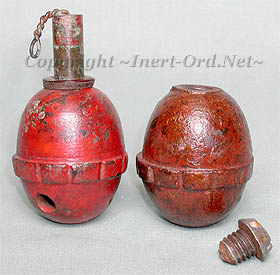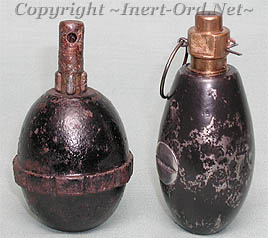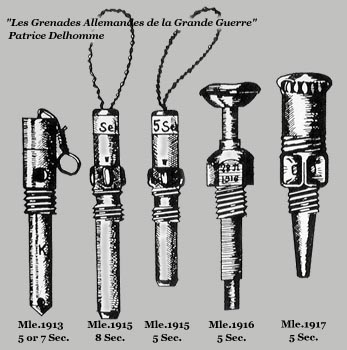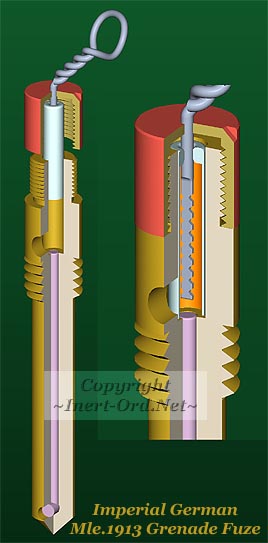
(Note - The smooth egg body is repainted.)
Development started in late 1916 which lead to the introduction of the cast iron "Egg" grenade, Mle.1917. It was loaded with black powder, or other explosive fillers. The average soldier could be expected to reach distances of over 40 meters, which meant the Eierhandgranate could be used in an offensive role as well as defensive.

This is referred to as the Mle.1917 Na.

 German instructional grenades were also produced. These can be classified as training and practice types. A training type was
for handling and throwing exercises, while the practice type contained a live delay fuze to add a degree
of realism. At far left is a practice egg, which is hollow and has three vent holes
in the base to allow gases to escape. This appears to be an original configuration
and is interesting to note it has an earlier fuze.
German instructional grenades were also produced. These can be classified as training and practice types. A training type was
for handling and throwing exercises, while the practice type contained a live delay fuze to add a degree
of realism. At far left is a practice egg, which is hollow and has three vent holes
in the base to allow gases to escape. This appears to be an original configuration
and is interesting to note it has an earlier fuze.


